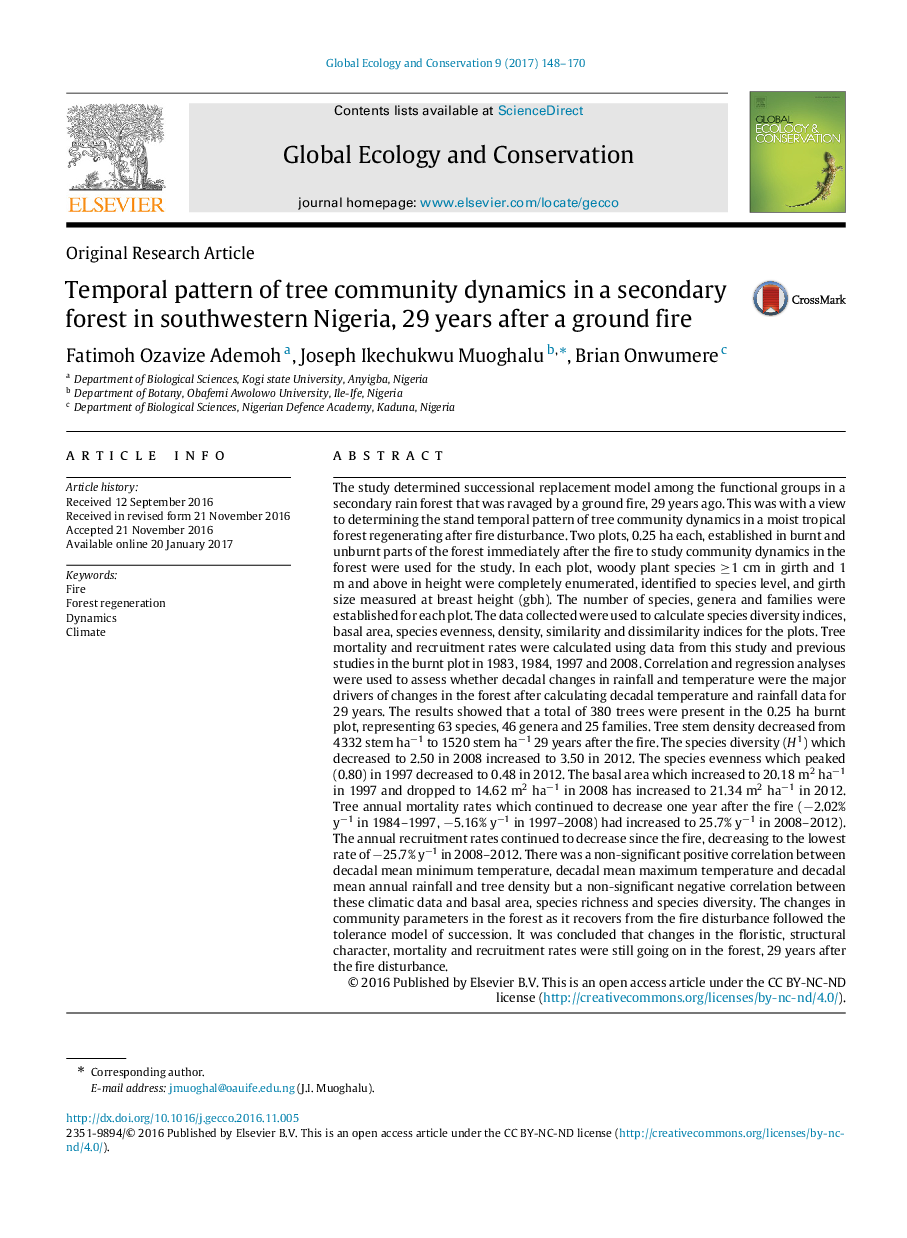| کد مقاله | کد نشریه | سال انتشار | مقاله انگلیسی | نسخه تمام متن |
|---|---|---|---|---|
| 5742437 | 1617658 | 2017 | 23 صفحه PDF | دانلود رایگان |

The study determined successional replacement model among the functional groups in a secondary rain forest that was ravaged by a ground fire, 29 years ago. This was with a view to determining the stand temporal pattern of tree community dynamics in a moist tropical forest regenerating after fire disturbance. Two plots, 0.25 ha each, established in burnt and unburnt parts of the forest immediately after the fire to study community dynamics in the forest were used for the study. In each plot, woody plant species â¥1 cm in girth and 1 m and above in height were completely enumerated, identified to species level, and girth size measured at breast height (gbh). The number of species, genera and families were established for each plot. The data collected were used to calculate species diversity indices, basal area, species evenness, density, similarity and dissimilarity indices for the plots. Tree mortality and recruitment rates were calculated using data from this study and previous studies in the burnt plot in 1983, 1984, 1997 and 2008. Correlation and regression analyses were used to assess whether decadal changes in rainfall and temperature were the major drivers of changes in the forest after calculating decadal temperature and rainfall data for 29 years. The results showed that a total of 380 trees were present in the 0.25 ha burnt plot, representing 63 species, 46 genera and 25 families. Tree stem density decreased from 4332 stem haâ1 to 1520 stem haâ1 29 years after the fire. The species diversity (H1) which decreased to 2.50 in 2008 increased to 3.50 in 2012. The species evenness which peaked (0.80) in 1997 decreased to 0.48 in 2012. The basal area which increased to 20.18 m2 haâ1 in 1997 and dropped to 14.62 m2 haâ1 in 2008 has increased to 21.34 m2 haâ1 in 2012. Tree annual mortality rates which continued to decrease one year after the fire (â2.02% yâ1 in 1984-1997, â5.16% yâ1 in 1997-2008) had increased to 25.7% yâ1 in 2008-2012). The annual recruitment rates continued to decrease since the fire, decreasing to the lowest rate of â25.7% yâ1 in 2008-2012. There was a non-significant positive correlation between decadal mean minimum temperature, decadal mean maximum temperature and decadal mean annual rainfall and tree density but a non-significant negative correlation between these climatic data and basal area, species richness and species diversity. The changes in community parameters in the forest as it recovers from the fire disturbance followed the tolerance model of succession. It was concluded that changes in the floristic, structural character, mortality and recruitment rates were still going on in the forest, 29 years after the fire disturbance.
Journal: Global Ecology and Conservation - Volume 9, January 2017, Pages 148-170